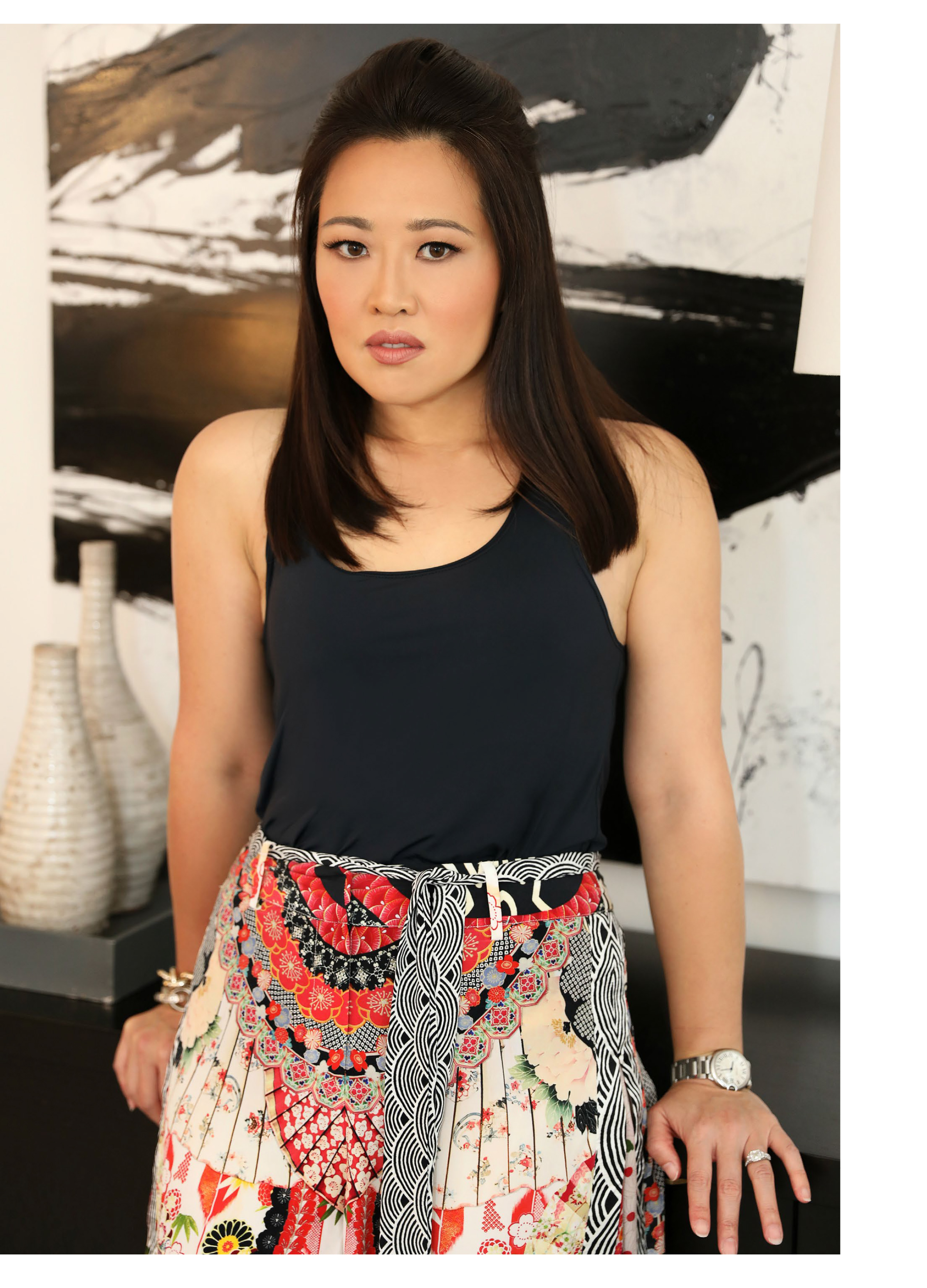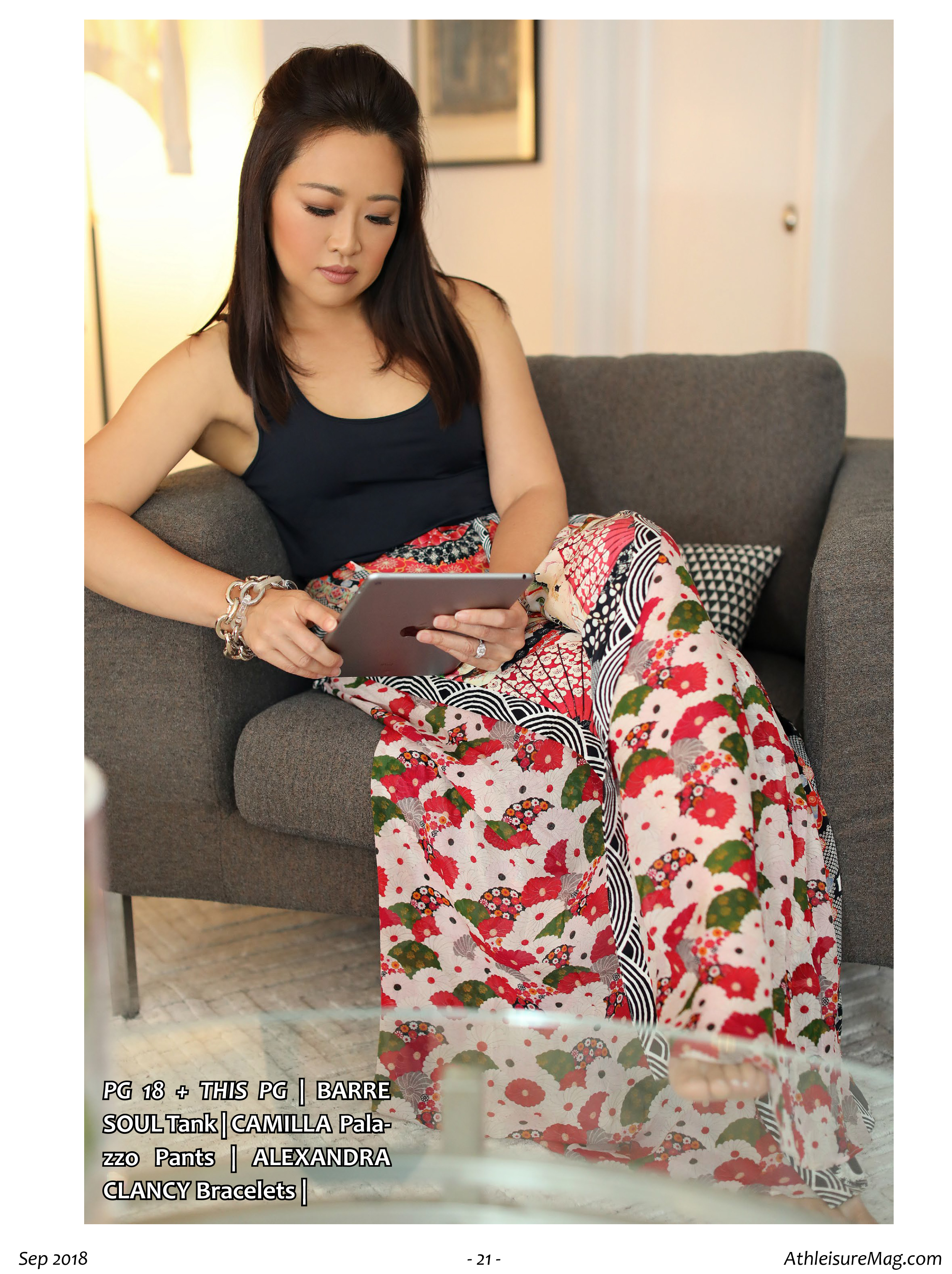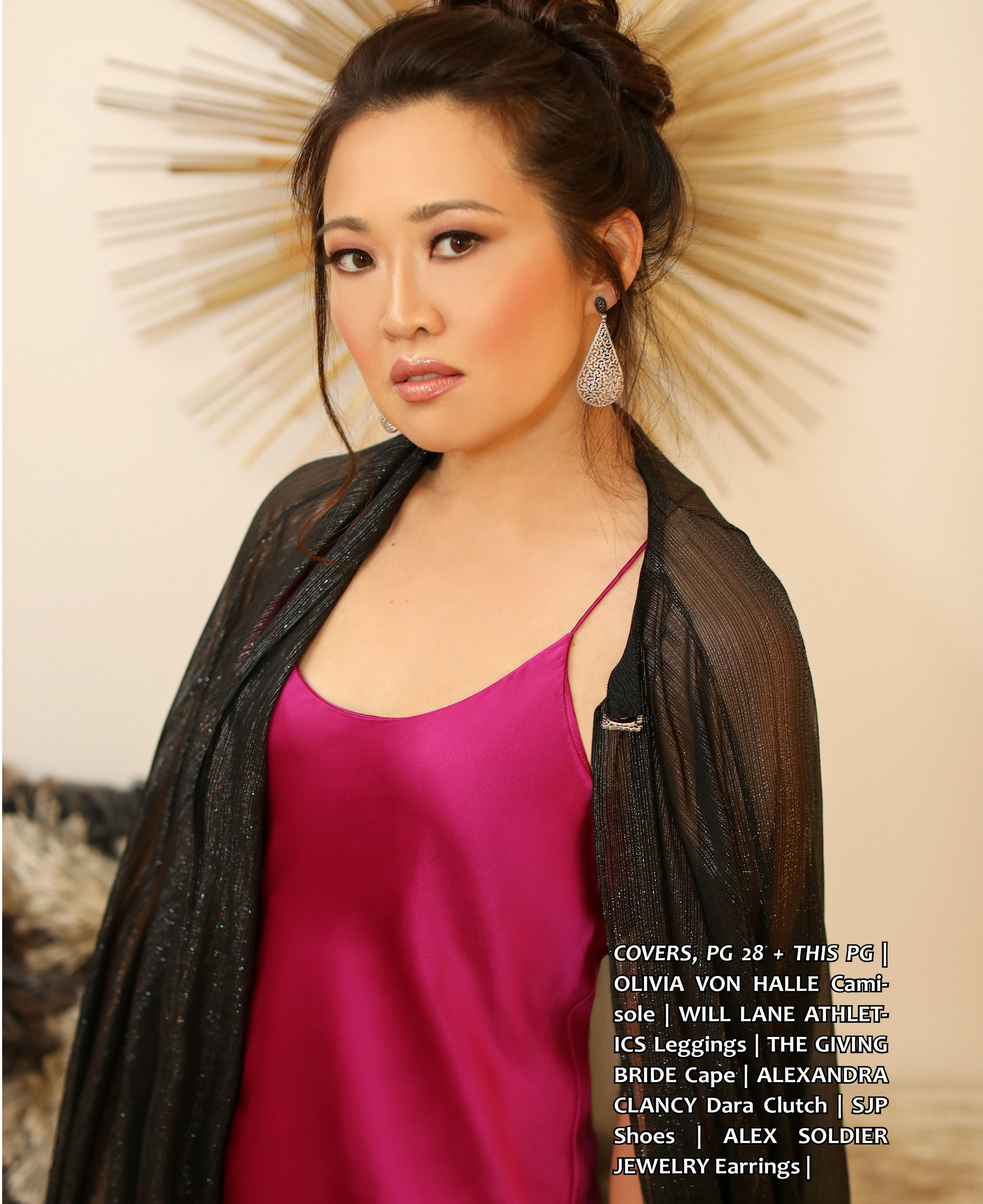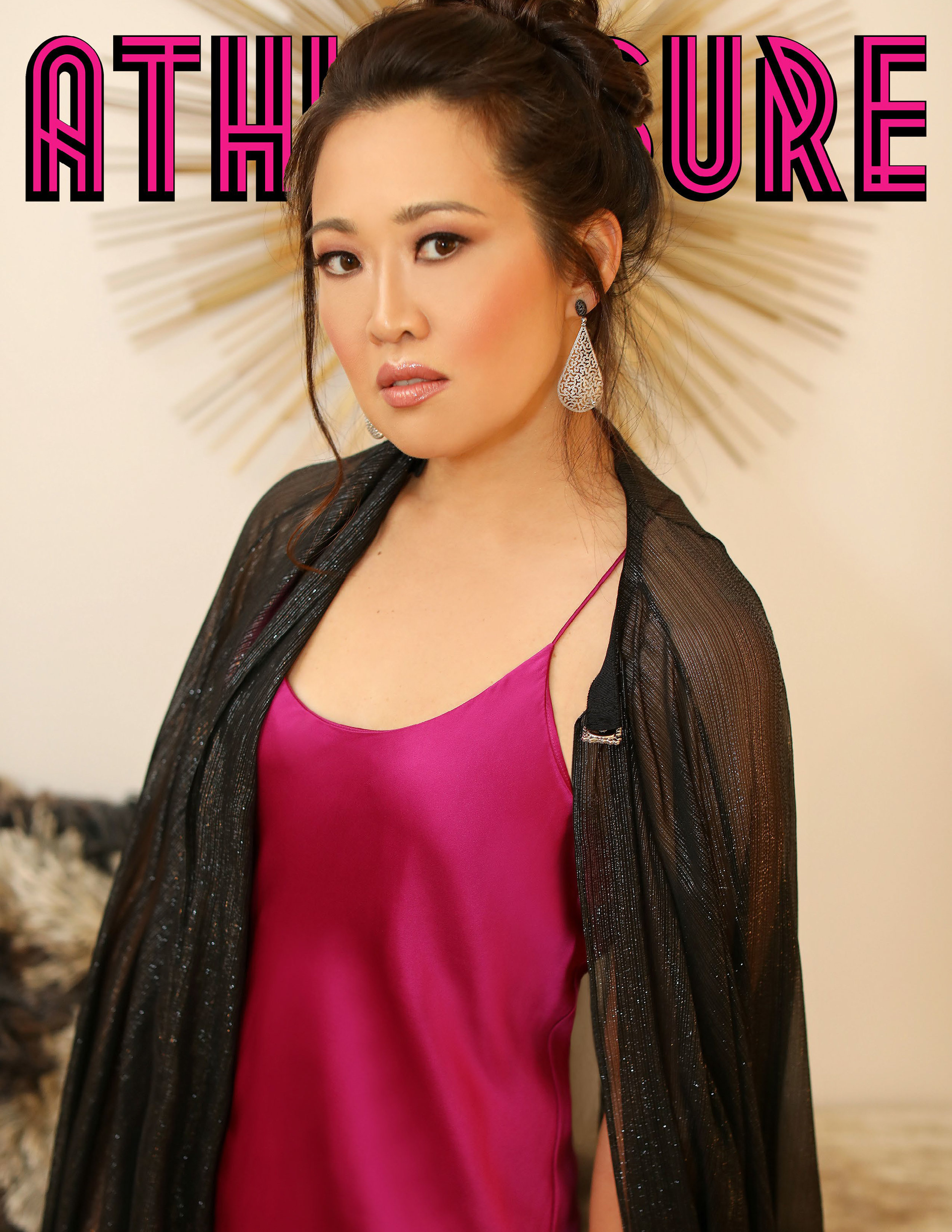We had the pleasure to sit with CNBC anchor, Melissa Lee for this month's cover story and shoot in NYC. We were excited to discuss all things journalism, financial news and markets, and special projects. It's incredible how she fits that into her daily routine, work- out habits and style on set and off.
ATHLEISURE MAG: When did you first learn you wanted to be a journalist and broadcaster growing up?
MELISSA LEE: I’ve known since middle school! I started developing an interest in the school paper and I even anchored the morning newscast, which was a daily 5 minute, closed-circuit broadcast in the morning. The station was called GNPS TV News, which stood for Great Neck Public Schools Television (I’m sure there is an incriminating take of me out there somewhere.) One day my mom said to me, “You could be like Kaity Tong someday” (Kaity was a star WABC anchor at the time.) That pretty much sealed the deal! Not to say I didn’t flirt with other possible careers -- I had a strong interest in medicine and spent summers doing lab work on colorectal cancer and Lyme disease. But I always came back to journalism!
AM: Our internet game is pretty strong, and we discovered your mother was once a sportswear designer… so we guess athleisure is sort of in your genes?
ML: My mom was a designer, and studied at the Fashion Institute of Technology. She stopped designing before I was born, but she made clothes and Halloween costumes for my older sister, younger brother and me. We also made a lot of clothes for dolls and stuffed animals! So I started learning about and appreciating, clothing and fashion at an early age.
AM: What was it like going to Harvard, what pro tips did you develop working at 'The Crimson' that you still use today? What was it like working on the online-side then as well?
ML: The Crimson was like a full-time job and it was a great training ground for the basics of journalism. In fact, many of its alumni are working journalists at The New York Times, Washington Post, NPR, Dow Jones and many other organizations. There were so many lessons I learned there- it really was sink or swim! But a couple of lessons stand out: 1. How to cold call to find a source or information. I think this skill gets lost in the age of Twitter and email, but picking up the phone and calling people in a particular dorm or on a particular team, getting them not to hang up the phone on you, and coaxing them to actually tell you information is a skill. 2. Networks are important. The Crimson alumni network helped me find internships. Through those internships, I was introduced to professional organizations such as the Asian American Journalists Association. Leveraging the network available to you, and then growing that network, is key.
AM: Hosting multiple shows definitely seems challenging! What is a typical day like for you?
ML: Hosting multiple shows definitely requires a strict daily routine! I wake up at around 6am, have breakfast, read emails and prep for what I think will be the big stories of the day will be. Then I hit the gym and get into the studios in Englewood Cliffs, NJ by 10:30am for hair and makeup. After that, it’s a race until the end of the day: eat lunch (yes, I have a set time for lunch, which I eat at my desk while prepping for the show), on air for Power Lunch from 1-3pm, brainstorm with the Fast Money team on what the show's lead should be, and leave for the Nasdaq Marketsite by 3:30pm to be on the air at 5pm.
AM: What some differences between hosting “Fast Money,” and co-hosting “Power Lunch.” Do you have a favorite?
ML: The two shows have two completely
different personalitites, so hosting both allows me to flex my different anchor “muscles.” Power Lunch is an ensemble cast, so I have two co-anchors and our task is to provide analysis on stocks in the news, investing, and various political stories and
how they might impact one’s portfolio.
On Fast Money, I am the solo anchor so I have more impact on what stories we tell and how we tell them. FM features a panel of four professional traders/money managers and it was created to be the post-game, after-market show, where we dissect interesting stock moves and market news with a look to the next trading day. It’s also almost entirely unscripted -- from the conversations we have to the interviews, so you have to be on your toes! You never know what anyone will say!
Making me choose a favorite show is like asking which of your children you love more. But, with that said, Fast Money will always have a special place in my heart because it was my first
permanent anchor job, and I’ve been hosting it for about 9 years, so I feel I have really helped evolve the show into what it is today.
AM: For our business and entrepreneur audience, what are some of your best practices in preparing for things that you know will be variable and change in real time?
ML: My philosophy is to build your base of knowledge. Read everything that you think is interesting, or might be of interest in the future. So for instance, of all the preparation I do ahead of any team events one show, I would say I might not use 70% of the information. But that 70% goes in the knowledge bank so when the unexpected happens, I can recall that interesting story about consumer credit trends or the analysis of drug price increases this year.
AM: How long can you go without being connected to Wi-Fi? Do you unplug at certain times of day?
ML: I try to protect certain times of day by unplugging: while I’m working out, meals or time with friends and family. I try not to respond to any work-related emails on weekends, and on vacation, I try to check emails only a couple times a day. (Notice I say “try”- it’s an ongoing battle!)
AM: What sets financial news coverage and analysis apart from reporting on other industries?
ML: I think the challenge for financial news journalists is making the numbers personal. Many people are put off by the numbers in business news - companies’ earnings report, economic data, stock prices, interest rates etc.
They may think it’s hard to understand. But all of that information tells a story. How many widgets is a company selling and is the company selling widgets at a faster pace than last year? How does an interest rate hike by the Federal Reserve impact what a consumer pays on her credit card debt?
We have a tremendous responsibility because the stories we report impact people’s money- people’s 401k plans, how they save for college, what stocks they buy. And building financial freedom and wealth can have profound effects for a family. No other area in journalism has that impact.
“Making me choose a favorite show is like asking which of your children you love more. But with that said, Fast Money will always have a special place in my heart because it was my first permanent anchor job, and Ive been hosting it for about 9 years...”
AM: What do you envision your audience is?
ML: I know CEOs, bankers, traders, portfolio managers all watch us. But I like to think that we are also accessible to the average at-home investor, so I often think that I am talking to my mom!
AM: What are some of your favorite guest interviews you've done thus far?
ML: Many of my favorite interviews were part of documentary or longform reporting. I did a story about mine safety and interviewed a third-generation coal miner (thousands of feet underground, in the mine) named Shag Jr. who chose to be a coal miner despite the risks. The reason was simple: you can earn a six-figure salary with a high school degree. It was the best job available to him, and he viewed his job as a service. Who makes sure the lights go on when you flip the switch? Coalminers, he said.
I also interviewed Cyril Rhamaphosa, now the president of South Africa, during my Coca Cola documentary. His investment firm, Shanduka, owned the only black-owned bottler during Apartheid, a time when Coke chose to stay with the country and take a side. Ramaposa recounted stories of marching with Nelson Mandela in the fight for equal rights. I felt like I was taking a trip back in history.
AM: How did you get involved traveling the world shooting documentaries? Are there any memorable surprise moments that happened during production?
ML: I have pitched almost every documentary I have done, so it was as simple as having a good idea.
Traveling abroad always has its surprises. During a trip to Capetown for my Bitcoin documentary, my producer and I traveled to a township called Khayelitsha, which is a very poor area where people live in tin homes and barely have electricity. Armed security accompanied us. The kids of the township were very excited to see a camera crew and crowded around us. But, one young boy pulled a gun on my producer! (I was shooting something on camera while this happened and found out about this afterwards.) Fortunately it was a toy gun! But given the stories we had read about the crime and given what our security detail told us about the area, that practically gave her a heart attack!
AM: Tell us about your latest documentary, "Bitcoin: Boom or Bust." Are you bullish on blockchain technology and/or cryptocurrency?
ML: The documentary explores the elusive and controversial world of bitcoin, the cryptocurrency that sparked a global frenzy. We tried to answer a couple of key questions: Is it the future of finance, a bubble or worse? I think the technology behind cryptocurrencies,
blockchain, has real promise. Corporate America is starting to use blockchain to track provenance of art and property, or improve efficiencies in their supply chain. I believe there are places in the world where cryptocurrencies will have a role-- places where people go unbanked, where there is tremendous volatility in their local currencies. But I think there are still questions as to whether crypto is a good investment.
I’ve done a number of documentaries on CNBC and what was so exciting about this one is the topic- I’ve never reported on a topic that is so divisive. Bitcoin is either a total bubble or the
future of money. And the doc looks and feels very different from more traditional documentaries. Check it out on CNBC, Hulu and Yahoo.
AM: Do you have some suggestions for younger journalists in financial news, and generally?
ML: Don’t be wedded to any particular media. In other words, make sure you love reporting and telling your story, whether it’s online, in print or on TV. And for those who are interested specifically in television, remember your career is a marathon, not a sprint. It’s not how fast you can get on air- it’s how long you can stay on air.
AM: With such a busy schedule, how do you take time for yourself?
ML: It’s really important to me to protect personal time. In this day and age, you are accessible all the time. And that tends to mean you are in “work mode” to varying degrees all the time. That is not healthy. So unplugging at certain times of day and making sure you’re doing something for yourself every day (that’s anything from going to the gym, to taking a walk, to calling a friend) is important.
AM: How would you define your style on air versus when you’re out and about running errands?
ML: On air, I like to be on the edgier spectrum of business attire - an occasional leather jacket, a pants suit with a layered necklace. I also like to adjust my hair and makeup according to my wardrobe. But when I’m just running errands it’s definitely jeans, t-shirt and maybe a leather jacket. And I am a fan of athleisure when I’m just going to the grocery or shopping! I also try to give my skin and hair a rest on weekends, so very little to no makeup and a ponytail!
AM: When it comes to working out, what is your fitness method of choice?
ML: My favorite cardio is rowing, but I try to use a couple machines a week to mix it up. I also like to alternate long, steady cardio with HIIT. And weights are a must!
AM: What would we find on your playlist?
ML: Totally eclectic with an alternative bent: Muse, Imagine Dragons, Lana del Rey, Elle King, Beyoncé, Bebe Rexha.
AM: What philanthropic efforts are you engaged in to give back to others/the community?
ML: It’s important to me to stay engaged with Harvard. I’ve been an alumni interviewer for four years now, interviewing applicants in the NYC area. It’s inspiring to meet so many amazing students and even more humbling to find that even some of the most qualified
kids don’t get accepted. I think of it as my way of helping shape the future of an institution I love.
TWITTER @MelissaLeeCNBC
Our Sept Cover shoot was shot at 865 United Nations Plaza #3C courtesy of Louise Phillips Forbes of Halstead Property.
Read more from the Sep Issue of Athleisure Mag and see Staying Ahead of the Market with Melissa Lee.




















